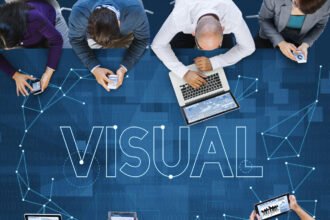Source: customerthink.com
Source: customerthink.com
While more analytics tools, including data visualization applications, are becoming available at a wide range of cost-effective pricing and ease of usability, many midmarket enterprises continue to try to base forward-looking decisions on time-worn methods:
- Pulling analysis from backward-looking spreadsheets
- Waiting too long for tech teams to set up new BI processes
- Poring through the same industry and demographics stats that are available to their competitors
- Relying too much on ‘gut feel’ and ‘that’s how we’ve always done it’
Just like larger enterprises, midmarket companies need to be able to derive new views of data, especially data from disparate sources, to pull out deeper connections and relationships that have the potential to inform better insight and decisions. Data visualization solutions can help midmarket enterprises make sense of data in ways that communicate better understanding to more roles in the company. Visualizations can enable different business roles to more quickly understand and retain the intelligence revealed by the analytics results.
Graphs, charts and dashboards kicked off data visualization forms years ago and obviously are still in use. Now imaginative, almost art-like representations, such as social networking visualizations, are being added to analytics. But be careful not to confuse pretty for insightful or even accurate
Many pitfalls can exist along the way to usable and trustworthy visualizations. Providing context is essential for generating effective and accurate data visualizations. Context – and the dynamics of business – can make or break the value of a particular data visualization. Context, relevant data and awareness of potentially shifting business conditions all must be part of the process for asking the right questions that lead to usable results. Context also acts as the means to determine if the analytics results make sense.
Some complex datasets require complex visualizations that still may not clearly communicate analytical messages for business roles. There are times when companies will need to supplement data visualizations with other analytics, to present comprehensive intelligence for complex problems or questions in ways that lead to clear understanding.
The challenge for any analytics is to make sure that the results are accurate, timely and use the right information. Visual representations can be harmfully inaccurate by including the wrong data, excluding the right data, or by using faulty algorithms. Or the data could be the right stuff, but how the analysis is depicted may cloud the actual insights being presented. Knowing what works and what doesn’t are essential to providing real business value.
New directions for data visualizations will continue to proliferate, along with new challenges and opportunities. Analytics results represented by data visualizations are only worthwhile if they add important intelligence, illuminate the meaning of data, and educate more roles in the company. Companies should never lose sight of why a data visualization was created in the first place. Real business value, trustworthy insight and continuous improvement should be the goals of most data analytics processes.






